Team:MIT/Projects/Project2
From 2009.igem.org
(→Objective) |
(→Motivation) |
||
| Line 12: | Line 12: | ||
=Motivation= | =Motivation= | ||
| - | To fully control cellular functioning, it would be useful to have a modular system that can provide both temporal and spatial control over any protein of interest within a cell. In other words, we should be able to control both when a gene is expressed and where the protein is functioning. The existing PhyB-PIF3 system provides temporal control over gene expression by acting as a transcriptional regulator. However, | + | To fully control cellular functioning, it would be useful to have a modular system that can provide both temporal and spatial control over any protein of interest within a cell. In other words, we should be able to control both when a gene is expressed and where the protein is functioning. The existing PhyB-PIF3 system provides temporal control over gene expression by acting as a transcriptional regulator. However, by adapting the PhyB-PIF3 system to control protein targeting, we can have both temporal and spatial control over a protein's functioning. Such a system can potentially be used as an on-off switch for essential genes by controlling movement the protein to and from where the protein functions in the cell. In addition, because protein targeting is key in controlling the cell cycle, the system can also potentially be used to control cell cycling and differentiation. Furthermore, reversible control of protein localization and delocalization can be useful as a tool to study diffusion rates within a cell. |
=Background on PhyB-PIF3 System= | =Background on PhyB-PIF3 System= | ||
Revision as of 23:09, 21 October 2009
Light-inducible protein localization in Yeast
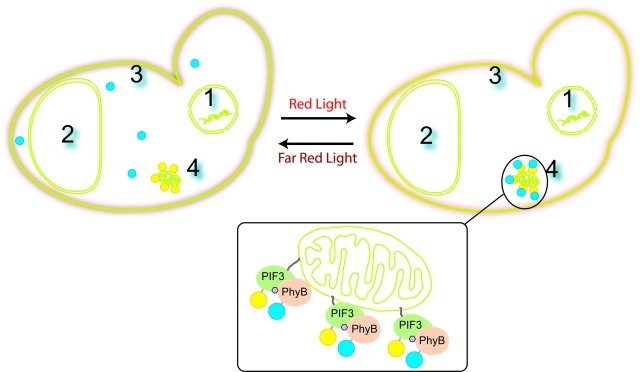
Objective
We set out to create a quick, reversible switch to control the localization to various targets within a yeast cell, such as the nuclear membrane, plasma membrane, mitochondrial membrane, and vacuole.
Motivation
To fully control cellular functioning, it would be useful to have a modular system that can provide both temporal and spatial control over any protein of interest within a cell. In other words, we should be able to control both when a gene is expressed and where the protein is functioning. The existing PhyB-PIF3 system provides temporal control over gene expression by acting as a transcriptional regulator. However, by adapting the PhyB-PIF3 system to control protein targeting, we can have both temporal and spatial control over a protein's functioning. Such a system can potentially be used as an on-off switch for essential genes by controlling movement the protein to and from where the protein functions in the cell. In addition, because protein targeting is key in controlling the cell cycle, the system can also potentially be used to control cell cycling and differentiation. Furthermore, reversible control of protein localization and delocalization can be useful as a tool to study diffusion rates within a cell.
Background on PhyB-PIF3 System
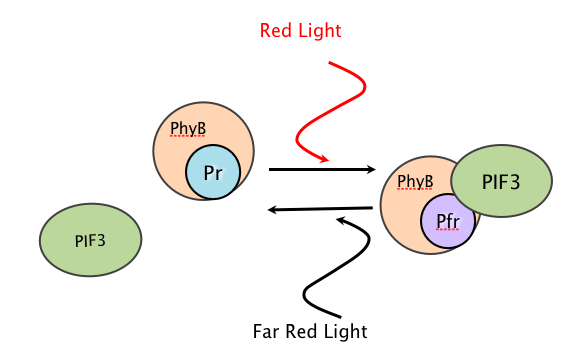
Mechanism
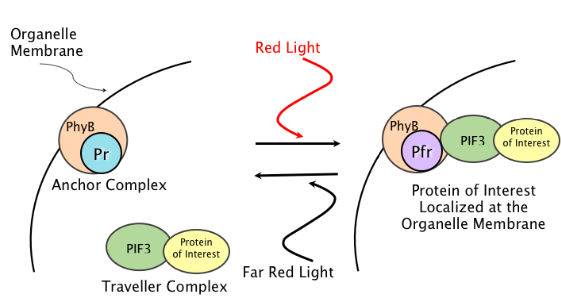
Materials Methods
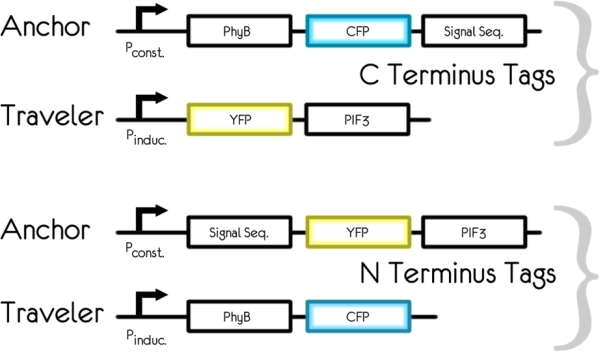
Sequential Transformation Plasmid Construction
Construction of the PhyB-CFP and Pif3-YFP Plasmids began with the amplification of each of the individual sequences, PhyB, CFP, Pif3 and YFP, from the Berkley Lab Plasmids. These sequences were subsequently digested and ligated into the prS313 backbone, a plasmid that contains a constitutive Myo2 promoter and the His gene. Pif and CFP were inserted using NotI and SacII, while PhyB, YFP used NotI and XmaI. Once the plasmid was complete it was transformed into Ecoli. The PhyB and Pif3 plasmids transformed successfully, which was confirmed through a check digest and sequencing. The corresponding fluorescent protein DNA was then incorporated into the plasmid through another round of digestion, ligation and transformation. The sequencing results for these plasmids were positive for incorporation of both DNA pieces for both of the constructs. Therefore, each of these plasmids were transformed into yeast and observed for fluorescence through microscopy.

Alongside work in the base constructs, a variety of C and N terminus localization sequences were chosen to test the PhyB, Pif System. Each localization sequence, once amplified, would be cloned into the appropriate backbone using the restriction enzymes. N terminus tags were destined for the Pif3-YPF backbone and C terminus for the PhyB-CFP Backbone
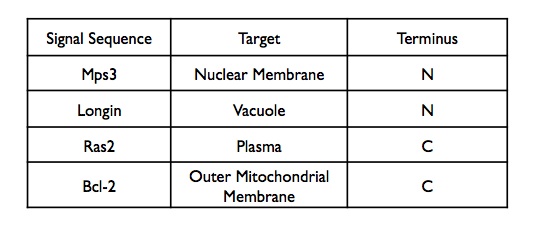
Homologous Recombination
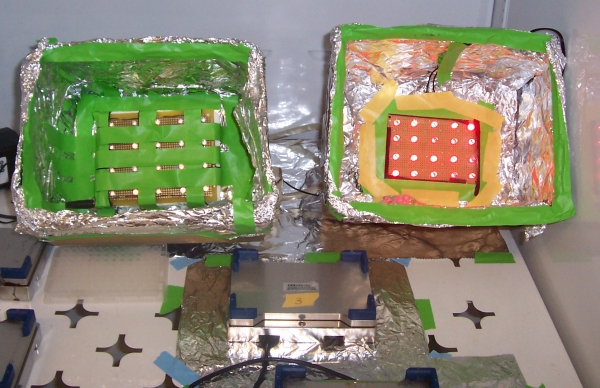
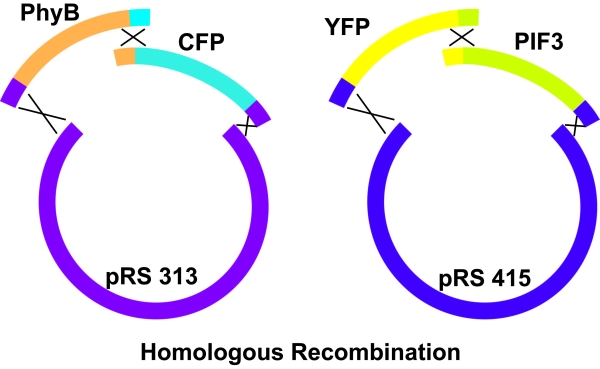

Plans:
 "
"